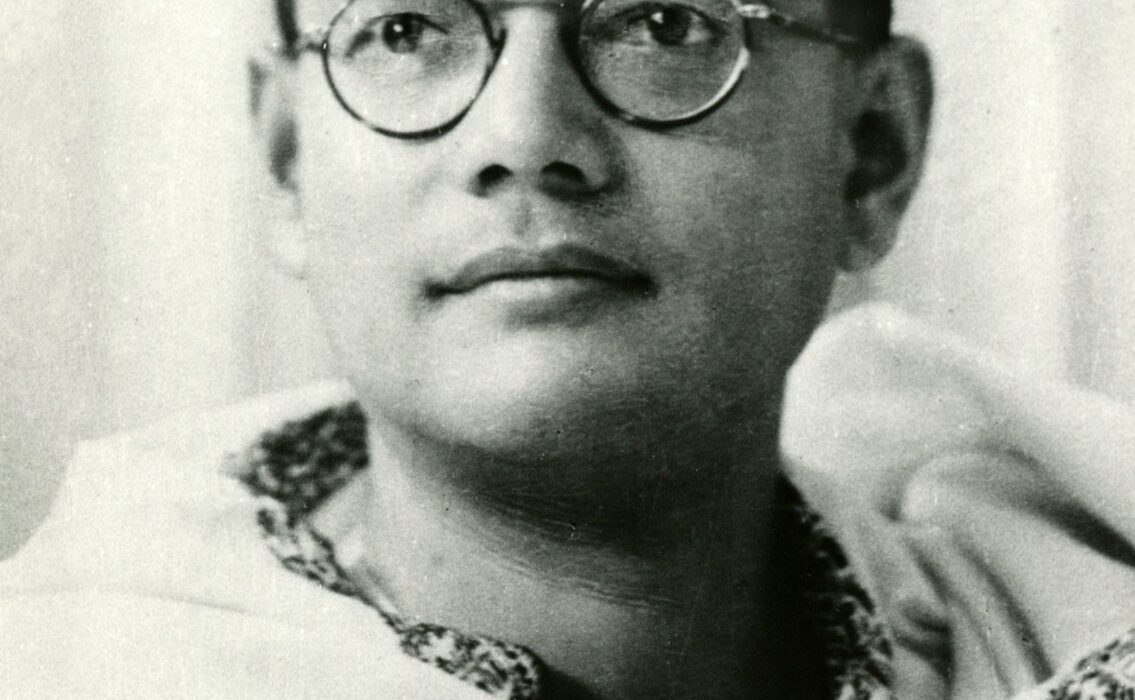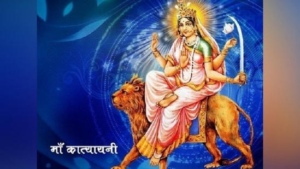Netaji Subhash Chandra Bose is a prominent figure in Indian history, known for his significant contributions to India’s struggle for independence from British colonial rule. He is considered as one of the most charismatic leaders of the Indian National Congress, and he was also the founder of the Indian National Army (INA). However, the circumstances surrounding his death on 18th August 1945 remains a mystery and a topic of much debate till today. The official story is that he died in a plane crash in Taiwan, but there have been several alternate theories that have been put forward, including that he may have survived the crash and lived in hiding. The controversy surrounding his death has led to several investigations and calls for the government to release classified files, but the mystery remains unsolved. In this article, we will explore the official story of Netaji’s death, the alternate theories, the investigations and the public response to the controversy.
Brief background on Netaji Subhash Chandra Bose and his role in India’s struggle for independence
Netaji Subhash Chandra Bose, also known as “Netaji” was born on January 23, 1897 in Cuttack, Odisha, India. He was a prominent leader in India’s struggle for independence from British colonial rule, and is considered one of the most charismatic leaders of the Indian National Congress. He was elected as the President of Indian National Congress twice, but later resigned from the party due to ideological differences.
Netaji believed in the idea of complete independence for India, which is why he formed the Indian National Army (INA) in 1942. He believed that the INA would be able to help India gain freedom from the British through an armed struggle. The INA, under his leadership, played a significant role in India’s freedom struggle. He was able to mobilize a large number of Indians, particularly the youth, to join the INA and fight for India’s freedom.
Netaji’s contributions to India’s freedom struggle were not limited to the INA, He also sought international support for India’s cause, and formed alliances with other countries such as Japan and Germany. He also broadcasted radio speeches to the Indian people, encouraging them to join the struggle for freedom.
Overview of the controversy surrounding his death
The controversy surrounding Netaji Subhash Chandra Bose’s death centers around the official explanation that he died in a plane crash in Taiwan on August 18, 1945, and the various alternate theories that have been put forward, suggesting that he may have survived the crash and lived in hiding. The official story is that he was travelling in a plane that crashed in Taiwan, and that he died from burns sustained in the crash. However, many people have disputed this explanation and believe that the true circumstances of his death are being covered up.
One alternate theory is that Netaji did not die in the plane crash, but instead survived and lived in hiding. This theory is based on claims of sightings of him after the alleged crash and the lack of concrete evidence of his death. Some people believe that he was murdered by the British or Indian government, as he was seen as a threat to their power.
Another theory is that he was held in captivity by the British or Indian government, and was not allowed to return to India. Some people have also claimed that he was spotted in various parts of the world, including Russia and China, after his alleged death.
The controversy has led to several investigations into the circumstances of Netaji’s death, including the Shah Nawaz Committee investigation in 1956, the Khosla Commission investigation in 1970-74, and the Mukherjee Commission investigation in 1999-2005. However, none of these investigations have been able to conclusively prove or disprove any of the theories surrounding his death. The controversy surrounding his death has also led to demands for the Indian government to release classified files on Netaji, but many of these files remain classified to this day.
The official story of Netaji’s death
The Indian government’s official explanation of Netaji’s death in a plane crash in 1945
The Indian government’s official explanation of Netaji Subhash Chandra Bose’s death is that he died in a plane crash in Taiwan on August 18, 1945. According to the official story, Netaji was on his way to Tokyo, Japan on a Japanese military aircraft, when the plane crashed shortly after takeoff. He sustained severe burns in the crash and died a few hours later in a hospital in Taihoku (now Taipei).
The Indian government claims that the plane crash was an accident and that there is no evidence to suggest that it was anything other than that. The official story is supported by the testimony of several witnesses, including the Japanese pilot of the plane, and by the Japanese government.
The Indian government also claims that the remains of Netaji were cremated in Taiwan, and that there is no evidence to support the theory that he survived the crash and lived in hiding.
The official explanation of the death of Netaji Subhash Chandra Bose has been challenged by many people, including some of his family members, who believe that the true circumstances of his death are being covered up. They argue that there is no concrete evidence of his death, such as a death certificate or an autopsy report, and that the remains that were cremated could not be positively identified as those of Netaji.
Despite the official explanation, the controversy surrounding Netaji’s death has continued to this day, with many people still believing that he did not die in the plane crash and that the true circumstances of his death are being covered up.
Evidence supporting the official story
The Indian government has presented several pieces of evidence to support the official story of Netaji Subhash Chandra Bose’s death in a plane crash in Taiwan on August 18, 1945. Some of the key pieces of evidence include:
- Eyewitness testimony: The Japanese pilot of the plane, Captain Tsunamatsu Shimada, and a Japanese army doctor, Dr. Yoshimi Hirota, who treated Netaji after the crash, both testified that he died from burns sustained in the crash.
- Cremation certificate: A cremation certificate was issued by the Taiwanese authorities, which stated that the remains of an Indian national, believed to be Netaji, were cremated in Taiwan.
- Investigation reports: The Indian government has also cited the findings of the Shah Nawaz Committee investigation in 1956, the Khosla Commission investigation in 1970-74, and the Mukherjee Commission investigation in 1999-2005, which all concluded that Netaji died in the plane crash.
- Japanese government’s statement: The Japanese government has also confirmed that Netaji died in the plane crash, and have provided documents related to the crash and the treatment of the injured.
- Post-mortem examination: The Japanese doctor who treated Netaji, Dr. Yoshimi Hirota, conducted a post-mortem examination on Netaji’s body and reported that he died due to burns.
However, it’s important to note that many people have questioned the authenticity and reliability of these pieces of evidence and have argued that they don’t conclusively prove that Netaji died in the plane crash. Some believe that these pieces of evidence were fabricated or manipulated to support the official story.
Despite the evidence presented by the Indian government, the controversy surrounding Netaji’s death has continued to this day, with many people still believing that he did not die in the plane crash and that the true circumstances of his death are being covered up.
The alternate theories of Netaji’s death
The theory that Netaji survived the plane crash and lived in hiding
One of the alternate theories surrounding the death of Netaji Subhash Chandra Bose is that he survived the plane crash in Taiwan on August 18, 1945, and lived in hiding. This theory is based on claims of sightings of him after the alleged crash and the lack of concrete evidence of his death, such as a death certificate or an autopsy report.
According to this theory, Netaji may have faked his own death in the plane crash in order to escape the British and Indian governments, who saw him as a threat to their power. Some people believe that he lived in hiding for several years, possibly in countries such as Russia or China.
The theory that Netaji survived the plane crash is supported by some of his family members and followers, who have claimed that they saw him or had contact with him after the alleged crash. They point to the lack of concrete evidence of his death and the inconsistencies in the official story as evidence that he did not die in the plane crash.
One of the key pieces of evidence cited by those who believe in this theory is the alleged sighting of Netaji in various parts of the world. Many people have claimed to have seen Netaji in different parts of the world, including Russia, China, and South East Asia after his alleged death.
Another key piece of evidence cited is the testimony of some INA soldiers, who claim that they saw Netaji after the alleged death.
It’s important to note that most of the claims of sightings and alleged encounters with Netaji after the alleged death are unverified and lack solid evidence, and the Indian government has denied the theory that he survived the plane crash. Despite this, the theory that Netaji survived the plane crash and lived in hiding continues to be a topic of much debate and speculation.
Claims of sightings of Netaji after 1945
Claims of sightings of Netaji Subhash Chandra Bose after his alleged death in a plane crash in Taiwan on August 18, 1945, have been cited as evidence by those who believe in the theory that he survived the crash and lived in hiding. According to this theory, Netaji may have faked his own death in the plane crash in order to escape the British and Indian governments, who saw him as a threat to their power.
There have been several claims of sightings of Netaji in various parts of the world after his alleged death, including:
- India: Many people have claimed to have seen Netaji in different parts of India, including Calcutta, Allahabad and Dehradun, after his alleged death.
- Russia: Some people have claimed that Netaji was seen in Russia, and that he may have sought refuge there.
- China: There have been claims that Netaji was seen in China, and that he may have sought refuge there.
- South East Asia: Some people have claimed that Netaji was seen in different parts of South East Asia, including Singapore, Indonesia, and Malaysia.
It’s important to note that most of these claims of sightings are unverified and lack solid evidence. Furthermore, the Indian government has denied these claims and maintains that Netaji died in the plane crash. Despite this, the claims of sightings have added to the speculation and debate around the true circumstances of his death.
The theory that Netaji was murdered by the British or Indian government
Another alternate theory surrounding the death of Netaji Subhash Chandra Bose is that he was murdered by the British or Indian government. This theory is based on the belief that Netaji was seen as a significant threat to the British and Indian governments and that they had a motive to eliminate him.
According to this theory, the British and Indian governments conspired to murder Netaji and then staged the plane crash to cover up his death. Proponents of this theory argue that the British and Indian governments had a reason to eliminate him because of his significant contributions to the Indian independence movement and his role in the Indian National Army (INA).
This theory is also supported by some of his family members and followers, who have claimed that the Indian government was involved in his death. They point to the lack of concrete evidence of his death and the inconsistencies in the official story as evidence that he was murdered.
It’s important to note that there is no concrete evidence to support this theory and the Indian government has denied these allegations and maintains that Netaji died in a plane crash. Despite this, the theory that Netaji was murdered by the British or Indian government continues to be a topic of much debate and speculation.
The investigation into Netaji’s death
The Shah Nawaz Committee investigation in 1956
The Shah Nawaz Committee investigation in 1956 was one of the first official investigations into the death of Netaji Subhash Chandra Bose. The investigation was set up by the Indian government in response to public demand for more information about the circumstances of his death. The committee was headed by Shah Nawaz Khan, a prominent Congress leader and a member of the Indian National Army (INA) under the command of Netaji.
The Shah Nawaz Committee was tasked with investigating the official story that Netaji died in a plane crash in Taiwan on August 18, 1945, and to look into the alternate theories that he had survived the crash and lived in hiding. The committee conducted its investigation between 1956 and 1957, and interviewed several witnesses, including the Japanese pilot of the plane and the Japanese army doctor who treated Netaji after the crash.
The Shah Nawaz Committee concluded that Netaji died in the plane crash, and that there was no evidence to support the theory that he had survived the crash and lived in hiding. The committee also found that the remains that were cremated in Taiwan were positively identified as those of Netaji.
The findings of the Shah Nawaz Committee were accepted by the Indian government and were considered to be the official explanation of Netaji’s death for several years. However, the investigation was criticized for its limited scope, for not having access to classified files and for not having the power to summon witnesses or to carry out a forensic examination. The investigation was also criticized for not having any representation from the Bose family.
Despite these criticisms, the Shah Nawaz Committee’s findings were considered as the official explanation of Netaji’s death for several years, but the controversy surrounding his death continued to be a topic of much debate and speculation.
The Khosla Commission investigation in 1970-74
The Khosla Commission investigation in 1970-74 was another official investigation into the death of Netaji Subhash Chandra Bose. The investigation was set up by the Indian government in response to persistent public demand for more information about the circumstances of his death and to look into the alternate theories that he had survived the crash and lived in hiding. The commission was headed by Justice GD Khosla, a retired judge of the Supreme Court of India.
The Khosla Commission was tasked with investigating the official story that Netaji died in a plane crash in Taiwan on August 18, 1945, and to look into the alternate theories that he had survived the crash and lived in hiding. The commission conducted its investigation between 1970 and 1974, and interviewed several witnesses, including the Japanese pilot of the plane and the Japanese army doctor who treated Netaji after the crash.
The Khosla Commission concluded that Netaji died in the plane crash and that there was no evidence to support the theory that he had survived the crash and lived in hiding. The commission also found that the remains that were cremated in Taiwan were positively identified as those of Netaji.
The findings of the Khosla Commission were accepted by the Indian government and were considered to be the official explanation of Netaji’s death for several years. However, the investigation was criticized for its limited scope, for not having access to classified files and for not having the power to summon witnesses or to carry out a forensic examination. The investigation was also criticized for not having any representation from the Bose family.
Despite these criticisms, the Khosla Commission’s findings were considered as the official explanation of Netaji’s death for several years, but the controversy surrounding his death continued to be a topic of much debate and speculation.
The Mukherjee Commission investigation in 1999-2005
The Mukherjee Commission investigation in 1999-2005 was the most recent official investigation into the death of Netaji Subhash Chandra Bose. The investigation was set up by the Indian government in response to persistent public demand for more information about the circumstances of his death and to look into the alternate theories that he had survived the crash and lived in hiding. The commission was headed by Justice Mukherjee, a retired judge of the Supreme Court of India.
The Mukherjee Commission was tasked with investigating the official story that Netaji died in a plane crash in Taiwan on August 18, 1945, and to look into the alternate theories that he had survived the crash and lived in hiding. The commission conducted its investigation between 1999 and 2005, and interviewed several witnesses, including the Japanese pilot of the plane and the Japanese army doctor who treated Netaji after the crash. The commission also had access to classified files and government documents related to the death of Netaji.
The Mukherjee Commission concluded that Netaji did not die in the plane crash and that the ashes in the Renkoji temple in Tokyo were not of Netaji. The commission also concluded that the theory of Netaji’s death in the plane crash was a ‘cover-up’ and that the ashes in Renkoji temple were not of Netaji.
The findings of the Mukherjee Commission were not accepted by the Indian government and were considered to be controversial. The government argued that the commission’s findings were based on speculation and not on concrete evidence. The findings of the commission were also criticized for not providing any concrete proof of Netaji’s survival or any new evidence about his death.
Despite these criticisms, the Mukherjee Commission’s findings have added fuel to the ongoing debate and speculation about the true circumstances of Netaji’s death. The commission’s report has led to demands for the Indian government to release more classified files on Netaji, but many of these files remain classified to this day.
The ongoing debate and the public’s response
Public interest and demands for more information about Netaji’s death
There has been a strong public interest and demand for more information about the death of Netaji Subhash Chandra Bose in India for many years. Netaji was a highly respected and revered leader of the Indian independence movement, and his death has been shrouded in mystery and controversy. Many people believe that the true circumstances of his death are being covered up and demand more information from the government.
There have been several reasons for the public interest and demand for more information about Netaji’s death. One reason is that he was a significant leader of the Indian independence movement and his contributions to the country are widely recognized. Additionally, the lack of concrete evidence of his death and the inconsistencies in the official story have fueled speculation and debate about the true circumstances of his death.
Another reason for the public interest and demand for more information is that Netaji’s death remains a topic of much debate and speculation, with many people believing that he did not die in the plane crash and that the true circumstances of his death are being covered up.
The public interest and demand for more information about Netaji’s death has led to several investigations into the circumstances of his death, including the Shah Nawaz Committee investigation in 1956, the Khosla Commission investigation in 1970-74, and the Mukherjee Commission investigation in 1999-2005. Despite these investigations, the controversy surrounding his death has continued to this day, with many people still believing that he did not die in the plane crash and that the true circumstances of his death are being covered up.
This has led to calls for the Indian government to release classified files on Netaji, but many of these files remain classified to this day. The public interest and demand for more information about Netaji’s death is likely to remain strong as long as the true circumstances of his death remain a topic of debate and speculation.
The government’s reluctance to release classified files on Netaji
The Indian government’s reluctance to release classified files on Netaji Subhash Chandra Bose is a source of frustration and disappointment for many people who are interested in the true circumstances of his death. The government has argued that the classified files contain sensitive information that could harm national security if released.
The government has also argued that the release of classified files would also violate the Official Secrets Act, which prohibits the unauthorized release of classified information. This has led to the government refusing to release a large number of files related to Netaji’s death, despite repeated requests from the public, researchers, and historians.
Some experts believe that the government’s reluctance to release classified files on Netaji is rooted in concerns that the information contained in the files could be damaging to the reputation of the government and its leaders, particularly with regard to the treatment of freedom fighters and the role of the government in the independence movement.
Moreover, some people believe that the government’s reluctance to release classified files on Netaji is to hide the truth about his death and to protect the political interests of those in power.
Despite the government’s reluctance to release classified files on Netaji, there have been calls for the government to be more transparent and to release more information about the true circumstances of his death. However, the government has not yet released the files and the controversy surrounding his death continues to be a topic of much debate and speculation.
The impact of the controversy on Netaji’s legacy
The controversy surrounding the death of Netaji Subhash Chandra Bose has had an impact on his legacy and reputation. Netaji was a highly respected and revered leader of the Indian independence movement and his contributions to the country are widely recognized. However, the lack of concrete evidence of his death and the inconsistencies in the official story have led to speculation and debate about the true circumstances of his death.
One impact of the controversy on Netaji’s legacy is that it has led to a cloud of uncertainty and doubt surrounding his death. This has made it difficult for people to fully understand and appreciate the significance of his contributions to the Indian independence movement.
Another impact of the controversy is that it has led to the marginalization of his legacy in the public imagination and official history. This has led to a lack of recognition and commemoration of his contributions, despite his significant role in the Indian independence movement.
Furthermore, the controversy has led to a lack of closure and closure for his family members and followers who believe that the truth about his death has been covered up.
Despite the controversy, Netaji’s legacy continues to be remembered and celebrated by many Indians. He continues to be a source of inspiration and pride for many, especially for those who are passionate about India’s freedom struggle. His writings, speeches, and contributions to the freedom struggle continue to be studied and admired by many.
Conclusion
In conclusion, Netaji Subhash Chandra Bose was a highly respected and revered leader of the Indian independence movement. His contributions to the country are widely recognized, but the true circumstances of his death are shrouded in mystery and controversy. The official explanation of his death in a plane crash in 1945 is widely disputed, and alternate theories such as his survival and hiding, murder by the British or Indian government, and death by other causes have been put forward. Despite several official investigations, the controversy surrounding his death continues to be a topic of much debate and speculation, with many people demanding for more information and for the Indian government to release classified files on Netaji. The controversy has had an impact on his legacy, creating a cloud of uncertainty and doubt, leading to a lack of recognition and commemoration of his contributions, and a lack of closure for his family members and followers. However, his legacy continues to be remembered and celebrated by many Indians and his writings, speeches, and contributions to the freedom struggle continue to be studied and admired.













